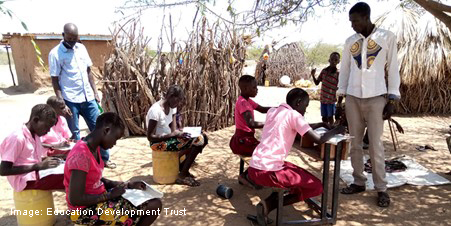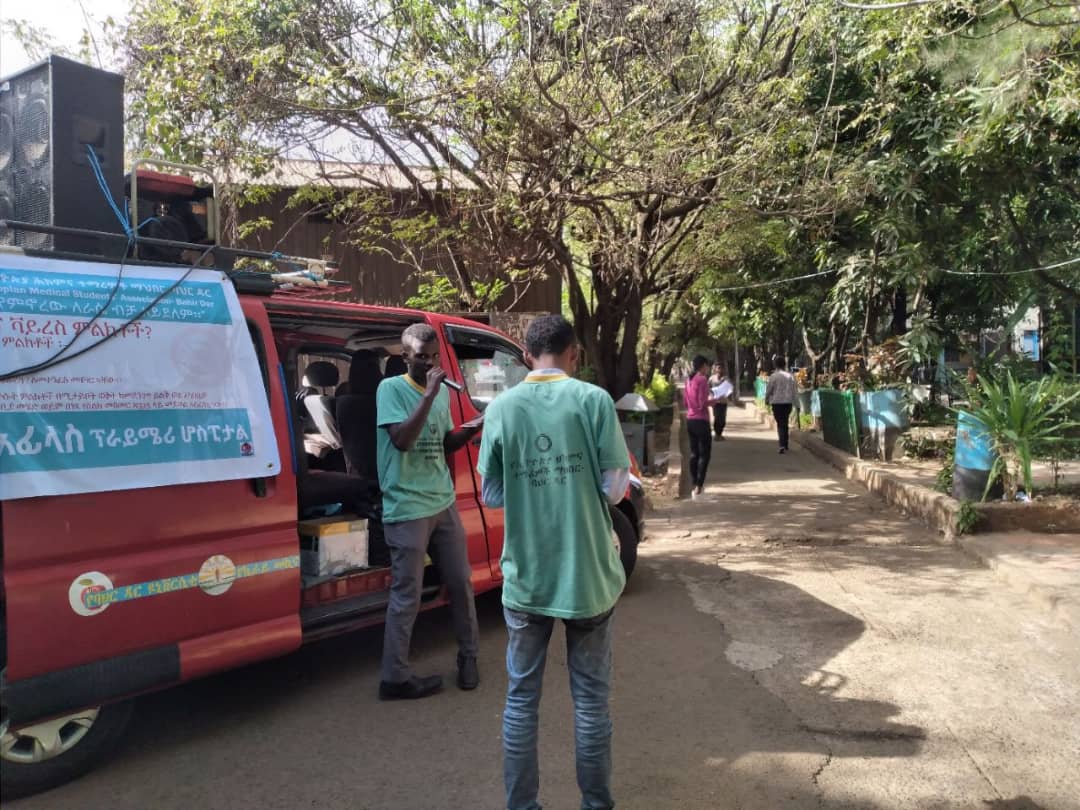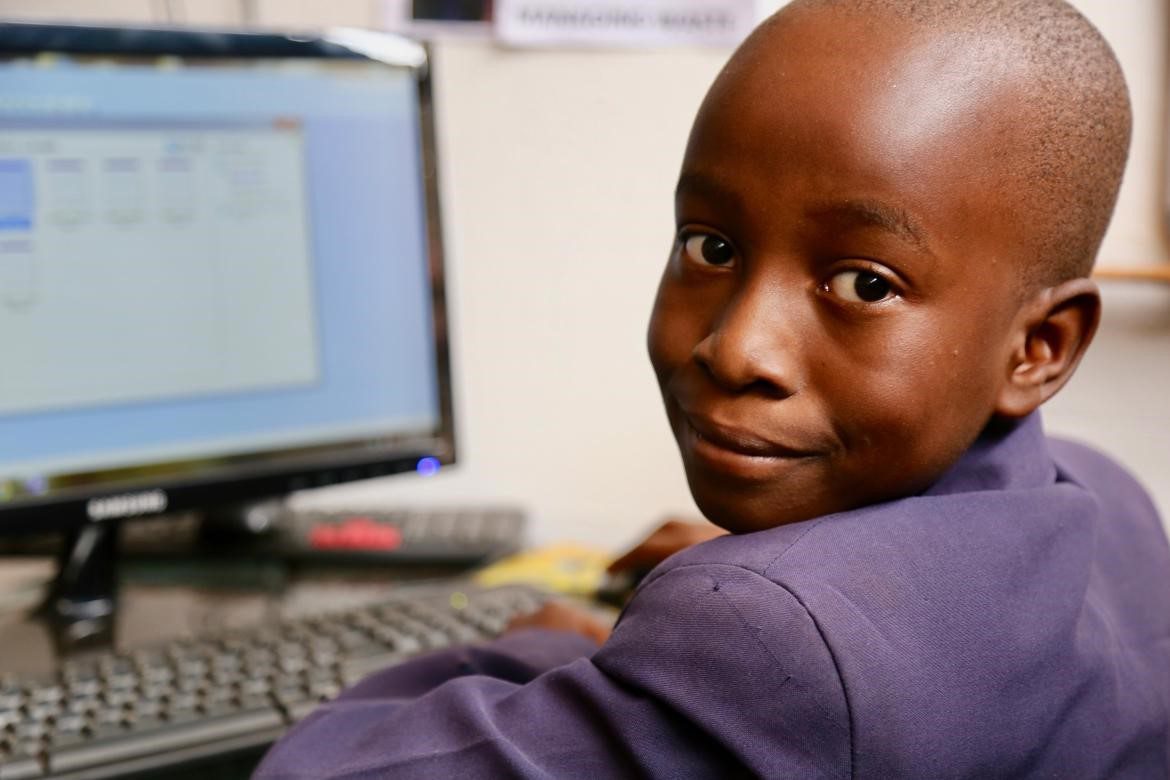This Commentary article was written by Mark Rotich, Margaret Kamau and Francesca Walker. It was originally published on the Education Development Trust website.
In the face of ongoing disruption from the Covid-19 pandemic, many education programmes and systems must continue to adapt in order to ensure education continuity for all learners – especially the most vulnerable. In our Wasichana Wetu Wafulu (WWW) programme in Kenya, we have pivoted the roles of community health volunteers to support learning continuity for the vulnerable girls we work with. Here, we share our thinking on the key factors that enabled the success of this initiative, and the lessons which may be applicable to other programmes seeking to adapt in the face of crises.
The Covid-19 pandemic has caused disruption to education around the world on a scale never seen before. More than 1.7 billion learners have been impacted by school closures across 188 countries, and many children and young people remain out of school over nine months after the initial rounds of closures. In many cases, the effects of school closures have been most severe for the most vulnerable pupils, who have remained at risk of not learning at all – or of dropping out of school entirely – during the disruption. With the ongoing uncertainty of the pandemic, and the possibility of future crises, it is vital that we consider how best to ensure education continuity for children and young people around the world. As we highlighted in our first think piece in our Learning Renewed series, such challenges require new thinking, and the lessons we learn from these crises could even be applied in non-crisis scenarios to help improve learning outcomes for the future.
Within this ‘new normal’, we believe a high degree of adaptability is required to ensure that pupils can continue to learn, despite the changing and adverse circumstances they may face. Specifically, this requires adaptive management of education initiatives and programmes, which makes effective use of available resources and technologies to benefit all students – especially the most vulnerable. Based on our experience and analysis of successful pivoting within our Girls Education Challenge Programme in Kenya, Wasichana Wetu Wafulu (WWW – Let Our Girls Succeed), we have identified a series of key factors which we believe will determine the success of such adaptive programming – and thereby best ensure that all children are able to continue to learn, even in the most challenging of circumstances.
How we maintained learning continuity for vulnerable girls in Kenya
When schools closed in March 2020, over 70,000 girls supported through our WWW programme faced the prospect of home learning in challenging environments. The girls who benefit from this project are from a variety of disadvantaged or impoverished backgrounds, meaning that very few learners could access technology-driven or online learning at home. However, throughout the Covid-19 crisis, our Girls Education Transitions (GEC-T) team in Kenya have adapted their programme delivery to help ensure that the most vulnerable girls can continue to learn – and to receive teacher feedback – throughout the period of school closures, using a mixed-team delivery model.
In this model, the team engaged Community Health Volunteers (CHVs) – a longstanding component of the Kenyan healthcare system – to support continuity of learning. These individuals already played an important role in the GEC-T programme prior to the pandemic, collecting household-level data on girls’ school attendance, alongside their healthcare responsibilities. Their role was expanded during the period of school closures to include the delivery of printed learning materials and tailored tutorials to girls, collecting written exercises for teachers and coaches to mark, monitoring girls’ engagement with learning activities and encouraging parents and caregivers to support learning at home (including, for example, through radio lessons). CHVs also conveyed personalised feedback from teachers and coaches, besides providing some girls with sanitary pads and dignity kits (which they would normally receive at school). Moreover, they were able to help ensure the girls’ psychosocial wellbeing by identifying any issues at household level and referring learners to local counselling networks as needed.
As we described in our in-depth report on the intervention, this has led to an impressive level of learning continuity for many disadvantaged girls. Among the sample of girls selected for our research, 91% of GEC girls living in the arid and semi-arid (ASAL) and 72% of those in urban areas had spent upwards of two hours per day learning during the period of school closures. This is no small feat: many children in high-income countries were failing to achieve this level of learning during lockdowns. In the UK, for example, the Children’s Commission report that 38.9% of children under 12 and 28.6% of teenagers were learning for two hours or less each day.
There are several factors which contributed to the success of the CHV intervention, which we believe can be applied as more general lessons in adaptive programme management in emergencies.
- Leverage existing, available resources within a community
The suddenness of school closures meant that pupils and teachers had little warning that schools would close, and so provision for remote education was dependent on existing resources. In a context where many teachers did not remain in the same communities as their pupils following school closures (for example, due to family care responsibilities in other localities, or needing to seek alternative income elsewhere), successful adaptations hinged on the use of available resources within a community.
Community health volunteers were an existing – and longstanding – component of the Kenyan healthcare system, operating in communities all over the country. These individuals already played an important role in the GEC-T programme prior to the pandemic, and already had an established role in the community. In many cases, they would already have been familiar with specific vulnerable students and their families. Importantly, as health workers, the CHVs were able to maintain their access to households during the pandemic, where other personnel (such as teachers) would have been prohibited by Covid-19 restrictions. This was a critical factor in the decision to utilise the CHVs to enable learning continuity, and similar considerations must be critically considered in adaptive planning for future emergencies.
- Make use of appropriate and available technology
Although ed-tech and online learning have been widely espoused in response to school closures, these high-tech solutions are not sufficiently accessible to enable learning continuity in many communities. In many low-income contexts – including among disadvantaged households in high-income countries – low-tech and no-tech solutions are needed. Many of the girls in the GEC-T programme are from very poor backgrounds, meaning that they were unlikely to be able to access high-tech learning platforms using the internet or smartphones. Moreover, while broadcast lessons are more accessible, only 45% of the girls’ households had access to radio and 44% to television, meaning that these lower-tech resources were also not reliable means of ensuring inclusive education continuity.
For this reason, our teams ensured that through the CHV intervention, girls had access to paper-based learning materials – a ‘no-tech safety net’ – while their schools were closed. These no-tech resources are not impacted by the likes of power outages or internet connectivity issues, and allow for more flexibility on when work is to be completed, for instance, where girls have other household responsibilities. Our research showed that all girls who had access to paper-based learning materials had used them – unlike, for example, mobile phones. (Of the households with mobile phones, only half of the girls had access to the device and were using it for learning purposes). Such safety nets are critical to ensuring inclusion, and that no child is left behind because their household or community lacks access to technology.
That said, where technology such as radios was available, the CHVs also encouraged the use of the government-led radio broadcast lessons alongside the paper-based tutorials and advised parents on the schedules or these programmes to best enable access for the girls. Within the WWW programme, we also distributed 1000 solar-powered radios to enable more girls to access these additional lessons, supplementing the hard-copy tutorials they received from the CHVs.
Critically, however, decisions on the model were made with a realistic understanding of the level of technological access the girls in the programme were likely to have. The CHVs were able to contribute to this understanding, by highlighting access issues for girls (for example, remote areas which radio signals could not reach) to coaches and the programme team, prompting the teams to facilitate alternative learning approaches. These included liaising with headteachers to allow learners to borrow books from school and to organise small, safe revision groups.
Such information must be a key consideration among programme managers and decision-makers in any potential future rounds of school closures, similar crises, and even blended learning scenarios, to enable more inclusive and equitable models of education provision.
- Generate community coalitions and buy-in
The success of the CHV intervention can, in part, be attributed to a level of ‘community enthusiasm’ for the measures taken. Parents, CHVs, coaches, local leaders and chiefs and the WWW programme team were all involved in the pivot of the programme – and the girls’ own desire to learn bolstered the sense of community buy-in.
This buy-in was necessary to ensure that girls were not only reachable and accountable, but also supported in their learning while unable to attend school. The tutorials that the girls received were in-depth – with detailed notes, multiple examples, and several exercises – and pitched at a level which required them to receive some support from a literate adult. The CHVs delivered both tutorials and marking schemes, designed by the GEC-T team, enabling a literate adult (such as a parent or older sibling) to mark the work and go through the details of the tutorial with the learner. Where there was no literate adult at home, the CHVs were able to facilitate connections with other literate adults or older girls in the community, or with volunteer teachers (for example, those who had returned to the area from other localities during the pandemic), helping to further develop the sense of community coalition in the programme. In rural areas, where the intervention has been more effective, adults from the community have also been able to supervise reading camps in (mainly outdoor) communal spaces, helping to ensure the girls’ safety and accountability.
In developing such community coalitions, several roles proved to be important. Firstly, the CHVs themselves have played a crucial role in engendering parental buy-in, both in delivering flyers to parents, and in providing clear information and encouragement to help them support their daughters’ learning at home. In addition, coaches – many of whom are usually instructional leaders at school level – took on responsibility at community level to help support CHVs in their role, and to help build wider community support. Moreover, local leaders such as chiefs have also played an important role in generating parental buy-in for home learning, for example by holding village meetings.
One lesson that should be noted from our experience in the CHV intervention is that such community coalitions were easier to effect in rural settings, which typically have a stronger sense of community. In urban areas, by contrast, families are more likely to move between areas or slums, which presents challenges in both consistently reaching the girls and building parental buy-in. Such nuances should be considered in plans for programme adaptations to help ensure the best outcomes for the beneficiaries in light of their individual circumstances.
- Provide role clarity, support and accountability
In a time of uncertainty, disruption and ongoing change, ensuring clarity around the roles and responsibilities of key actors and stakeholders is essential to effective practice. In the CHV intervention, this was clearly communicated during training sessions designed by the GEC-T team, which included guidance on how to speak to parents about home learning, how to deliver and collect assignments, the role of the literate person in the household, including marking (if applicable), and how to support remedial learning programmes. The training was facilitated by school-based coaches, who also provided information and guidance on national TV and radio lessons to help the CHVs support the girls using these resources at home.
In addition to ensuring that individuals have a clear understanding of their roles and responsibilities, successful programmes will also need to ensure that these individuals are adequately supported to render the changes sustainable. In the case of the CHVs, the GEC-T worked with the CHVs’ managers to ensure that they had adequate time and bandwidth to perform the new aspects of their roles and avoid any conflicts over the use of the time. The CHVs were also given a stipend for their new duties, and measures were taken to help prevent them from either contracting or transmitting the virus in their communities – including providing hand sanitizer, face covering, and additional mobile phone airtime (to enable them to make calls where helpful and thereby minimize the need for additional travel across larger villages). They also took part in regular conference calls and small, socially distanced review meetings to ensure that their needs were understood – and met – and that any concerns they had would be responded to effectively.
Finally, clear accountability structures are needed to ensure the effective reach of interventions. In our programme, not only were the girls themselves accountable to a literate adult and CHV for their learning, but a cascade approach helped to ensure visibility and accountability at all levels of the programme. Coaches oversaw five-to-ten schools each, with responsibility for ensuring that girls were learning and for training and motivating the CHVs. They reported to senior coaches (each supporting five coaches), who reported to regional coordinators, who in turn provided feedback and insights to the central programme team.
Such structures are not only valuable in adaptive programme management for the aforementioned visibility and accountability, but they also enable the effective and efficient collection of disaggregated data, which can be used to critically assess the impact of the intervention and provides crucial information to inform future adaptations or interventions.
We are delighted that the CHV intervention has had such a positive and profound impact on the girls we work with through such a challenging period. To find out more about the initiative and read our analysis in full, please click here.
Throughout the Covid-19 pandemic, Education Development Trust has sought to be highly responsive to the changing needs of educators, system leaders and our partners around the world. In doing so, we have developed an evidence base from which we have developed new thinking, which we call ‘Learning Renewed’, which reimagines what more effective, equitable and resilient education systems might look like, and how they might better withstand future shocks.





